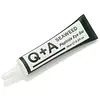What's inside
What's inside
 Key Ingredients
Key Ingredients

 Benefits
Benefits

 Concerns
Concerns

 Ingredients Side-by-side
Ingredients Side-by-side

Water
Skin ConditioningPolysilicone-11
Glycerin
HumectantMaltodextrin
AbsorbentMagnesium Aluminum Silicate
AbsorbentButylene Glycol
HumectantPyrus Malus Fruit Extract
Skin ConditioningPalmitoyl Tetrapeptide-7
Skin ConditioningCaffeine
Skin ConditioningRosmarinus Officinalis Leaf Extract
AntimicrobialColeus Forskohlii Root Extract
EmollientHelichrysum Italicum Extract
AntiseborrhoeicVoandzeia Subterranea Seed Extract
Skin ConditioningLactic Acid
BufferingHydrolyzed Jojoba Esters
Skin ConditioningPentylene Glycol
Skin ConditioningHydroxyacetophenone
AntioxidantDiosmine
AntioxidantPolyglyceryl-10 Laurate
Skin ConditioningCaprylyl Glycol
EmollientLaureth-12
EmulsifyingChrysin
Skin ConditioningXanthan Gum
EmulsifyingEthylhexylglycerin
Skin ConditioningPolyglyceryl-4 Caprate
EmulsifyingSorbitan Oleate
EmulsifyingTetrasodium Glutamate Diacetate
CI 77120
Cosmetic ColorantSodium Carbonate
BufferingPolysorbate 20
EmulsifyingSodium Hydroxide
BufferingPropanediol
SolventSodium Polyacryloyldimethyl Taurate
Emulsion StabilisingSuccinic Acid
BufferingWater, Polysilicone-11, Glycerin, Maltodextrin, Magnesium Aluminum Silicate, Butylene Glycol, Pyrus Malus Fruit Extract, Palmitoyl Tetrapeptide-7, Caffeine, Rosmarinus Officinalis Leaf Extract, Coleus Forskohlii Root Extract, Helichrysum Italicum Extract, Voandzeia Subterranea Seed Extract, Lactic Acid, Hydrolyzed Jojoba Esters, Pentylene Glycol, Hydroxyacetophenone, Diosmine, Polyglyceryl-10 Laurate, Caprylyl Glycol, Laureth-12, Chrysin, Xanthan Gum, Ethylhexylglycerin, Polyglyceryl-4 Caprate, Sorbitan Oleate, Tetrasodium Glutamate Diacetate, CI 77120, Sodium Carbonate, Polysorbate 20, Sodium Hydroxide, Propanediol, Sodium Polyacryloyldimethyl Taurate, Succinic Acid
Water
Skin ConditioningAloe Barbadensis Leaf Juice
Skin ConditioningGlycerin
HumectantHamamelis Virginiana Water
AstringentTripeptide-29
Skin ConditioningFucus Vesiculosus Extract
EmollientChondrus Crispus Extract
Skin ConditioningLimonium Vulgare Flower/Leaf/Stem Extract
Skin ConditioningLaminaria Digitata Extract
Skin ProtectingThymus Serpyllum Extract
Skin ConditioningSodium Gluconate
Skin ConditioningCarbomer
Emulsion StabilisingLeuconostoc/Radish Root Ferment Filtrate
AntimicrobialPotassium Sorbate
PreservativePhenoxyethanol
PreservativeCaprylyl Glycol
EmollientSodium Benzoate
MaskingSodium Hydroxide
BufferingAlcohol
AntimicrobialCitric Acid
BufferingWater, Aloe Barbadensis Leaf Juice, Glycerin, Hamamelis Virginiana Water, Tripeptide-29, Fucus Vesiculosus Extract, Chondrus Crispus Extract, Limonium Vulgare Flower/Leaf/Stem Extract, Laminaria Digitata Extract, Thymus Serpyllum Extract, Sodium Gluconate, Carbomer, Leuconostoc/Radish Root Ferment Filtrate, Potassium Sorbate, Phenoxyethanol, Caprylyl Glycol, Sodium Benzoate, Sodium Hydroxide, Alcohol, Citric Acid
 Reviews
Reviews

Ingredients Explained
These ingredients are found in both products.
Ingredients higher up in an ingredient list are typically present in a larger amount.
Caprylyl Glycol is a humectant and emollient, meaning it attracts and preserves moisture.
It is a common ingredient in many products, especially those designed to hydrate skin. The primary benefits are retaining moisture, skin softening, and promoting a healthy skin barrier.
Though Caprylyl Glycol is an alcohol derived from fatty acids, it is not the kind that can dry out skin.
This ingredient is also used as a preservative to extend the life of products. It has slight antimicrobial properties.
Learn more about Caprylyl GlycolGlycerin is already naturally found in your skin. It helps moisturize and protect your skin.
A study from 2016 found glycerin to be more effective as a humectant than AHAs and hyaluronic acid.
As a humectant, it helps the skin stay hydrated by pulling moisture to your skin. The low molecular weight of glycerin allows it to pull moisture into the deeper layers of your skin.
Hydrated skin improves your skin barrier; Your skin barrier helps protect against irritants and bacteria.
Glycerin has also been found to have antimicrobial and antiviral properties. Due to these properties, glycerin is often used in wound and burn treatments.
In cosmetics, glycerin is usually derived from plants such as soybean or palm. However, it can also be sourced from animals, such as tallow or animal fat.
This ingredient is organic, colorless, odorless, and non-toxic.
Glycerin is the name for this ingredient in American English. British English uses Glycerol/Glycerine.
Learn more about GlycerinSodium Hydroxide is also known as lye or caustic soda. It is used to adjust the pH of products; many ingredients require a specific pH to be effective.
In small amounts, sodium hydroxide is considered safe to use. However, large amounts may cause chemical burns due to its high alkaline.
Your skin has a natural pH and acid mantle. This acid mantle helps prevent harmful bacteria from breaking through. The acid mantle also helps keep your skin hydrated.
"Alkaline" refers to a high pH level. A low pH level would be considered acidic.
Learn more about Sodium HydroxideWater. It's the most common cosmetic ingredient of all. You'll usually see it at the top of ingredient lists, meaning that it makes up the largest part of the product.
So why is it so popular? Water most often acts as a solvent - this means that it helps dissolve other ingredients into the formulation.
You'll also recognize water as that liquid we all need to stay alive. If you see this, drink a glass of water. Stay hydrated!
Learn more about Water